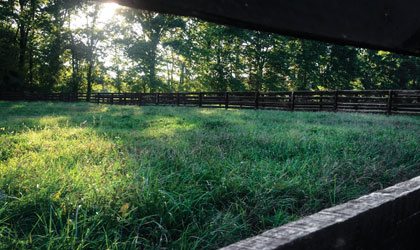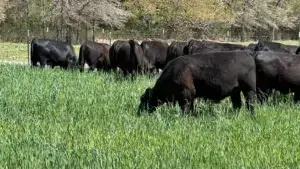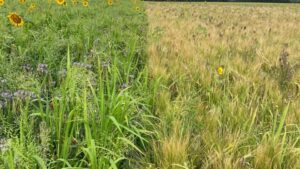Select the Right Mix of Forages
With a number of options to choose from, it’s important to know your customer when putting together a seed mix.
When Selling Forages, industry specialists stress that it’s important to help farmers and ranchers remember it’s a long-term investment. As the sales representative, you should consider how the product will be used and his or her end goal.
“Purchasing any seed is a large investment but with forages, you need to know a myriad of aspects and this where you need to ask the right questions,” says Roeland Kapsenberg, vice president of forage seeds for DLF Pickseed. “It’s important to know the customer’s needs to determine the right mix for that farm.”
Lyndon Mansell, chair of the Alberta Forage Industry Network, agrees. When compared to other crops, he says forages are mostly a two- to four-year investment compared to cereals or oilseeds, which are planted annually.
“We need to find out what is best-suited to that particular customer’s needs,” Mansell says. “It’s so important to remember that this is a long-term investment and takes not only time to establish, but can also be doubly expensive to redo.”
Experts agree that it’s essential to understand the end users’ goals to best select the right forage mix.
Ask the Right Questions
With so many options available — legumes, grasses and pasture species — sales representatives need to know the characteristics of the various native and pasture species that are available and have a good working knowledge of the local geographies to select the best species.
When providing a new forage recommendation, experts advise that you consider the:
• Climate (rainfall and frost).
• Species that grow well locally (frost and drought hardiness).
• Soil type and health.
• Type of animals to be grazed.
• Existing pasture type and species grown.
• Need for annual or perennial species.
• Long- and short-term rotations.
• Purpose. Is it for grazing, cutting or a combination?
According to Kapsenberg, you really need to know what the end user wants to accomplish and take it from there. “What is the main concern of the customer? Production potential? Reducing bloat? Milk production? Dry matter?” he asks. “All of these questions need to be addressed.”
Mansell also acknowledges that at times, sales representatives, despite their due diligence on product awareness, might be swayed by producers because of price concerns. But he cautions that this is not the right approach when selecting the best ingredients for the mix.
Ongoing Research and Product Availability
While Mansell and Kapsenberg agree that there are a number of products in the marketplace that are effective in terms of quality and quantity, there is a real need for continued research and development to maintain a pipeline of products that can meet the needs of today’s farmers and ranchers.
“If you compare the amount of research being invested in corn and new products coming down the pipeline to that of forage, it’s obvious that the new corn varieties far surpass that of new forage species,” Mansell explains.
While there is ongoing research into new forage mixtures and varieties, the turnaround time for bringing a new product to market is much longer than that of an annual crop. “It’s known that some large seed companies are spending billions of dollars on corn research, but that dollar number is nowhere near the same for forage research,” Mansell says.
Kapsenberg agrees that competition for research and development dollars is high simply due to the complex nature of testing new forage varieties. “For an oilseed or cereal, researchers will know the yield and quality data within the first year but for forage development, researchers will not necessarily know in the first year of establishment whether it will work. It’s a longer production cycle and it’s also a longer-term investment with respect to research dollars.”
Product Knowledge
Sales representatives receive extensive training on selecting the right mix for the right farm. For the most part, they’re doing a very good job at it in the United States and Canada, say Mansell and Kapsenberg.
But Kapsenberg adds that sometimes producers need to re-evaluate products they might have overlooked in previous years. “There needs to be proof that one product is better than another,” Kapsenberg says. “However, product turnaround is slower due to the length of time a forage stand can be productive, and uptake of new varieties is also a lot slower simply due to the nature of the business.”
Mansell notes that picking the right varieties in the mix is a complex decision but when managed properly, growers are reaping the benefits. “Some mixtures will multiply, while others will do well on a variety of soil types, such as sainfoin,” he says.
Sainfoin is a forage legume that does not cause bloat and also comes in winter-hardy strains that produce hay and pasture yields close to that of alfalfa. “It’s also adapted for better regrowth for rotational grazing and maintains good tannin levels to help reduce or prevent bloat in grazing animals,” Mansell says.
Kapsenberg notes that many seed companies are researching species and redeveloping these species for better adaptation to various geographical areas. “Festulolium is a great example of the research being done to create new adaptive qualities for use in various geographies,” Kapsenberg says. “These adaptations have allowed festulolium to offer not only higher forage qualities but also higher yield and a larger geographical growing range.”
Genetic makeup improvements have created a higher genetic quality of festulolium and its these variations that have opened the door to new options for growers and sales reps across North America. “Festulolium now offers so many more choices for producers and sales reps,” explains Kapsenberg. “We are proud of the inroads we have made with festulolium — as testified by the ongoing trial evaluations. This is not a new concept, but we have expanded the potential use of this hybridized grass for the marketplace and growers.”
Kapsenberg adds that the multiple geographies festulolium can now thrive in, provides a whole new range of use for a product that at one time might have been overlooked when selecting the right mix.
Shannon Schindle
 |
For more information about DLF Pickseed’s festulolium products, visit: |













